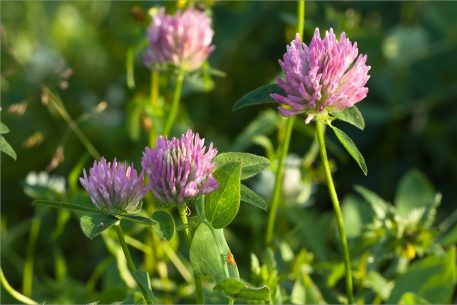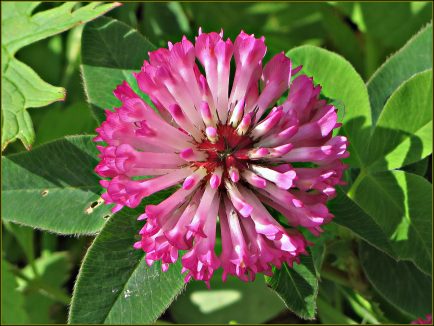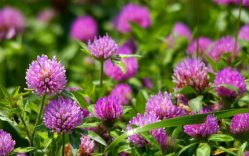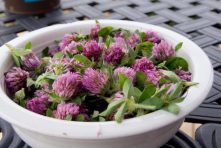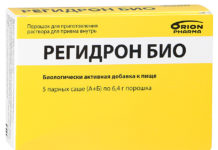Herbaceous perennial grows along river banks, in meadows, forest edges, along roads. Meadow clover is valued in agriculture, traditional medicine, herbal medicine. The plant enriches the soil with nitrogen, provides food to honey bees, contains a complex of nutrients and bioactive substances (BAS).
Material Content:
Plant description
You should pay attention to the biological characteristics of meadow clover, so that by mistake you do not collect less valuable or poisonous species for treatment. The stems of the plant rise above the ground to a height of 50 cm, directing their triple leaves to the light. Red or pink heads consist of many “moths” flowers. Nodules containing nitrogen-fixing bacteria can grow on the roots.
The description of the Trifolium pratense plant must be supplemented by a mention of its nutritional value. Grass contains up to 25% protein, free amino acids, fatty acids. Cultivated varieties are grown as valuable fodder plants. People can also use flowering shoots as food.
What is useful for humans red clover:
- honey plant;
- tea substitute;
- medicinal raw materials;
- component of filling soups (dried heads are used);
- eaten in boiled, pickled and pickled form;
- natural green dye for dyeing fabrics and yarn.
Tincture, decoction, infusion of plants, clover honey - these components are widely used in traditional medicine and herbal medicine.
The main medicinal raw materials are blooming heads and young leaves. The tops of the shoots can be cut with scissors or torn off with your hands.Long flowering allows you to harvest raw materials from May to September. Clovers are laid out in a thin layer and dried in the shade.
The following biologically active substances were found in inflorescences and leaves:
- glycosides - trifolin, isotrifolin;
- trifolirizin (against fungus);
- carotene, vitamins B, C, E, K;
- isoflavones (phytoestrogens);
- tanning agents;
- trace elements;
- saponins;
- flavones.
Traditional healers recommend using the entire plant (including roots) as a medicinal raw material. In the fall, red clover is dug up, the stem is cut. The thickened part of the root is cleaned of soil, washed, cut and dried.
Read also: maccelerated nut - beneficial properties and contraindications
Different parts of the plant have a complex effect:
- antiseptic (antimicrobial);
- anti-inflammatory;
- hemostatic;
- antitumor;
- wound healing;
- painkillers;
- expectorant;
- diuretic;
- sweatshops;
- vitamin.
In recent years, desensitizing, antitoxic, antitumor properties of food and medicinal plants have attracted more and more attention.
K. meadow species can be distinguished by smaller inflorescences. They contain less biologically active substances.
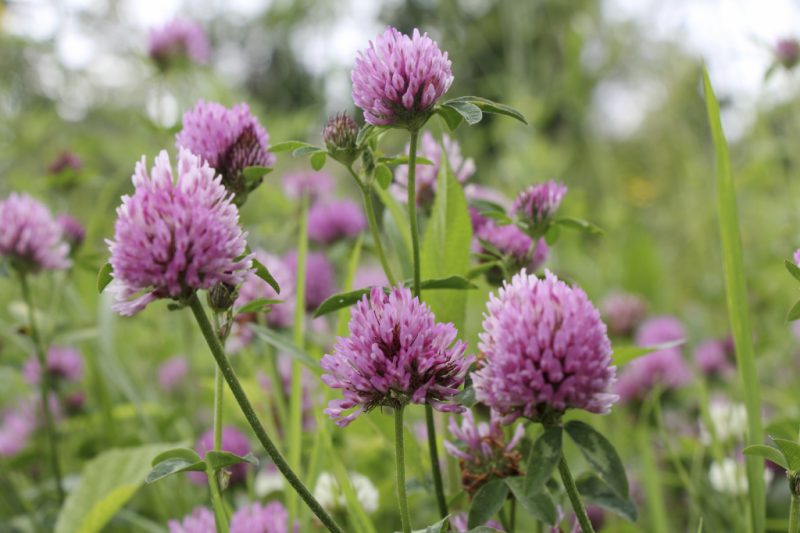
Application in traditional medicine
Decoction and infusion - aqueous solutions of medicinal substances of plants. To obtain tinctures, biologically active substances are extracted (extracted) with diluted medical alcohol or vodka. Preparations made in accordance with all the rules can be used independently at home. In addition, the blooming tops of red clover are included in the composition of fees (teas).
Red clover is used for the prevention and treatment of:
- inflammation of the stomach, intestines;
- headache, dizziness;
- gynecological diseases;
- bladder inflammation;
- gallstone disease;
- urolithiasis;
- chronic cough;
- bronchial asthma;
- atherosclerosis;
- anemia.
Fresh juice, squeezed from flowering clover meadow, helps with a deficiency of vitamin C, acute respiratory infections, bronchitis. The drug is taken for atherosclerosis, gout. The daily dose is 3–6 tbsp. l juice with honey - drink during the day.
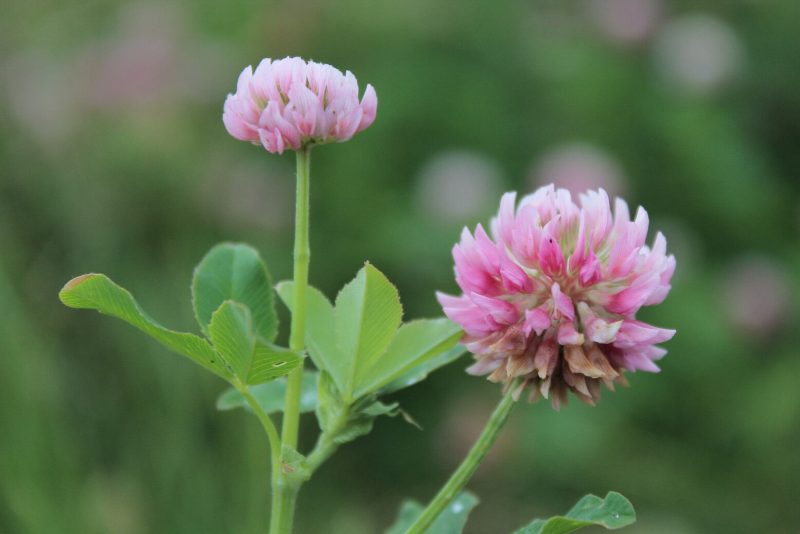
In folk medicine, it is recommended to lubricate panaritium clover juice, use externally for earaches, frostbite, pressure sores, rheumatism. Fresh chopped leaves will help stop the blood and speed up the healing of abrasions, scratches, cuts, small wounds. A decoction of the roots can be used for compresses and lotions for diathesis, for baths for rickets in children. They apply funds in the form of poultices for rheumatic pains.
Recipes for various diseases
Alkaloids are better soluble in ethanol, glycosides pass into water. Therefore, tincture and infusion have individual healing properties and contraindications. They can be used interchangeably if they contain substances equally soluble in alcohol and water (vitamin C, tannins).
Tincture of meadow clover on vodka: indications for use
The drug complements the drug therapy of tuberculosis. The components of the tincture have a beneficial effect on the mucous membrane of the respiratory tract, lungs. Ethanol additionally has an antimicrobial and analgesic effect. Water-alcohol tincture can be drunk with noise in the ears and headaches caused by atherosclerosis.
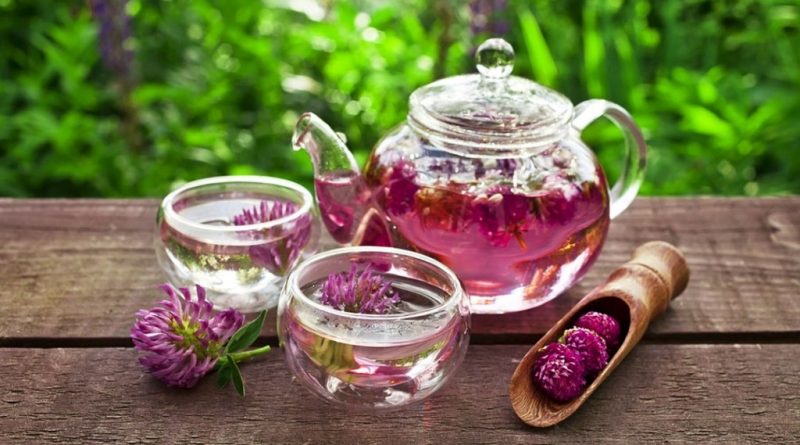
Recipe:
- Pour 40 g of clover heads with 500 ml of vodka (40%).
- The bottle is closed, left to infuse for 12-18 days.
- Take 2 tsp. tinctures for the night.
Every two weeks, it is recommended to take a break in treatment for a period of 10 days. The full course lasts 3 months. After six months, it is recommended that the event be repeated.
A decoction of plant inflorescences
Soft parts - leaves, flowers - it is not recommended to boil for a long time. According to phytotherapists, with strong heating, a lot of ballast substances from the grass pass into the solution. Hard raw materials are boiled longer: roots, seeds, bark.
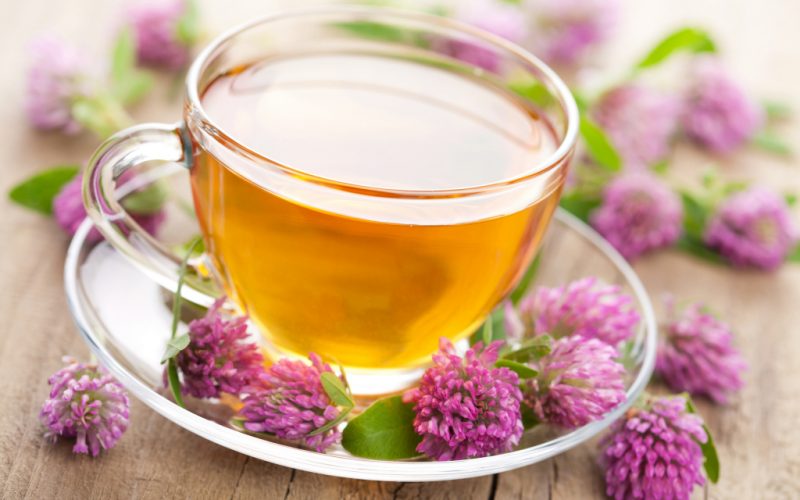
Infusion Recipe:
- Grind 20 g of blooming heads, add 250 ml of cold water.
- Cover the composition with a lid, boil for 10-15 minutes, preferably in a water bath.
- Filter the cooled extract, squeeze the plant residues.
- Take 50 ml of infusion 3 or 4 times a day.
Cooking a decoction is slightly different. Inflorescences are boiled twice as long, infused for 10 minutes and filtered hot.
The smaller the raw material, the shorter should be the period of its heating. Infusion of inflorescences is often prepared without boiling - in a thermos or cup. Brew 2 tbsp. l clover heads in a glass of boiling water. Cover and insist 20-40 minutes. Pass the solution through a strainer and drink 50 ml 2–4 times a day before meals.
Infusion or decoction is taken with:
- urolithiasis;
- bronchial asthma;
- chronic cough;
- enterocolitis;
- cholecystitis;
- gastritis;
- anemia.
A decoction or infusion of heads is used for external treatment of diathesis, for washing suppurative wounds, for burns, bedsores, frostbite. The tool is used for lotions on painful areas of the body.
Herb ointment - how to use?
Healing agent is prepared from ¼ cup of flower heads and 200 ml of water. The raw materials are boiled in a water bath until completely softened. When the pulp from the flowers completely absorbs water, remove the container from the fire, mix the composition with vegetable oil (1: 1). Ointment from red clover is used to treat burns, frostbite, boils.
Useful properties for women, men, children
Herbal hormones are necessary for the female body in reproductive age, are useful to mitigate the effects of menopause. Clover tincture and infusion can be drunk with PMS, painful menstruation, to prevent inflammation of the appendages. A decoction of the roots is used for pain in the ovaries, for sedentary baths with thrush and other genital infections.
Red clover - a home "beautician":
- Infusion of inflorescences is added to cosmetic masks for problematic dry and aging skin.
- Rinse hair after washing with a decoction of grass to give the hair a lively shine, eliminate greasy, itching, dandruff, and strengthen the roots.
- Used as cosmetic ice for the face, frozen in the form of cubes, infusion or decoction.
Clover preparations can be taken by men to restore and maintain potency. Daily dose - 2 tsp. infusions of inflorescences.
A child or adult is given an infusion for chronic cough, problems with the stomach and intestines. Tincture is added to the water to rinse the oropharynx with acute respiratory viral infections, diseases of the throat, bronchi. Children can bathe with a decoction of grass to improve the condition of the skin with various dermatoses.
Contraindications to the use of red clover
All parts of the plant are non-toxic. Tincture or broth is safe for oral and external use, subject to dosages. However, the use of clover, rich in phytoestrogens, which can harm pregnant and breastfeeding women. Among the contraindications are some forms of fibroids, endometriosis, ovarian and breast cancer. The list is supplemented by digestive disorders, thrombophlebitis.
It is interesting:bee bread: useful properties
Meadow clover is easy to harvest, easy to use for the treatment of adults and children. Tincture or broth normalize metabolism, help fight the causes and consequences of atherosclerosis, and contribute to strengthening the reproductive health of women and men.


